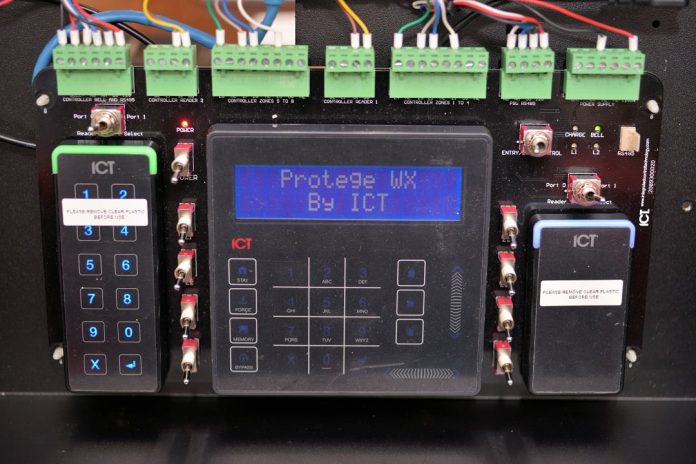ICT ProtegeWX is a wizard-based access control, intrusion, lift control and automation system that supports 10,000 users, 50,000 events, 512 inputs, 512 outputs, 128 doors, 8 elevator cars and 32 floors per car. ProtegeWX is fully scalable and offers browser and app-based management.
ICT’S ProtegeWX is a wizard-based security system that puts access control, intrusion detection, lift control and automation into the hands of installers in an affordable, expandable and easy to manage package. Modular, you start with a controller or an affordable starter kit and build out using optional modules to meet the expanding needs of your application. The notion of ProtegeWX is a solution that you unbox, connect the power supply, power up the controller and launch the web browser on your laptop using the controller’s IP address. Because it uses wizards for setup and programming, installers are guided through configuration in a trice.
Of course, such simplicity is easier said than done and we were interested to see just how easy it is to drive the ProtegeWX. Before we get going it’s worth pointing out that ICT designed the system to support the large majority of systems with between 1-50 doors.

“When we came out with ProtegeWX 3 years ago we were trying to deliver a product that was a bit different to what everyone else was doing – a solution that an end user could embrace and use moving forward – that’s WX,” James Robinson, ICT’s sales director, Asia Pacific tells me.
“It’s all about no software and no complications, taking into account that the number 1 problem in any small medium install is that the customer does not get the software – they have to pay call-out fees just to add a user. Because WX is web-based, users, as well as installers, have all the functionality they need.”

As Robinson unpacks the ProtegeWX training unit, I get an immediate sense of the modularity of this solution. At the heart of the system is the DIN Rail WX system controller, which features a pair of reader ports, configurable for either Wiegand or RS-485 reader operation, 8 high security monitored inputs, 1 high current monitored bell output and 2 high current Form C relay outputs. Installed on the training board with the controller are expanders and readers.
“Our main system controller has the ability to do 2 doors of access control with 4 readers, 8 inputs and 3 outputs and from there we can expand the system,” Robinson says. “This device here is a 4-amp ICT power supply connected on the RS-485 bus and monitored for low battery and current overload. The events are reported to the controller, as well as the monitoring centre.”
Other modules in the ProtegeWX range include 2 door expanders, input expanders and output expanders. There’s a lot of expansion – the limits of the system are 128 doors (264 readers), 512 inputs, 512 outputs, 8 elevators cars at 32 floors each, and 50,000 events onboard.
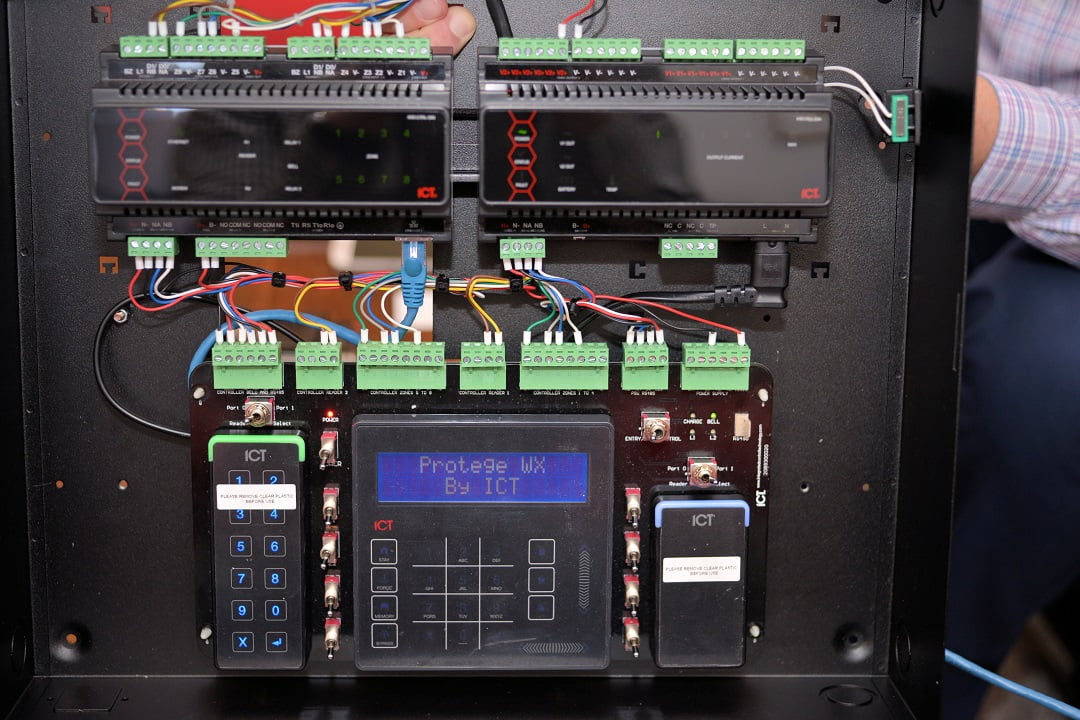
“What we identified during development of this system is that 80 per cent of the market needs 1 to 50 doors, intrusion detection and low level lift integration,” Robinson explains. “That’s a base building that does not need integration with video surveillance or HR platforms to synchronise databases – it’s just conventional access control, intrusion, lifts, and maybe turning some lights on and off when the system is armed and disarmed. And that’s exactly what WX does for you.”
At the heart of making an access control solution like this one simplistic is the programming interface. ICT has achieved this by giving WX a web server that can be accessed by a web browser from any connected device running any type of browser – Apple, Chrome, Mozilla, IE and the rest. The idea is to make the system capable from the point of view of functionality, while ensuring it’s easy for installers out of the box, and simple for end users to manage as well.
Robinson has got his laptop open and connected to the IP address of the controller.
“There’s nothing to be seen here until we get started,” he explains. “The first thing we’ll undertake is the registration of a platform, which enables free updates and accesses the Protege WXpert course, which teaches techs everything from wiring and system architecture, to advanced programming. The controller ships in the basic mode allowing access control and intrusion and after completing the WXpert course, installers can unlock additional functionality – low level lift integration and anti-passback. After that, any controller they register in their name automatically unlocks those features.”
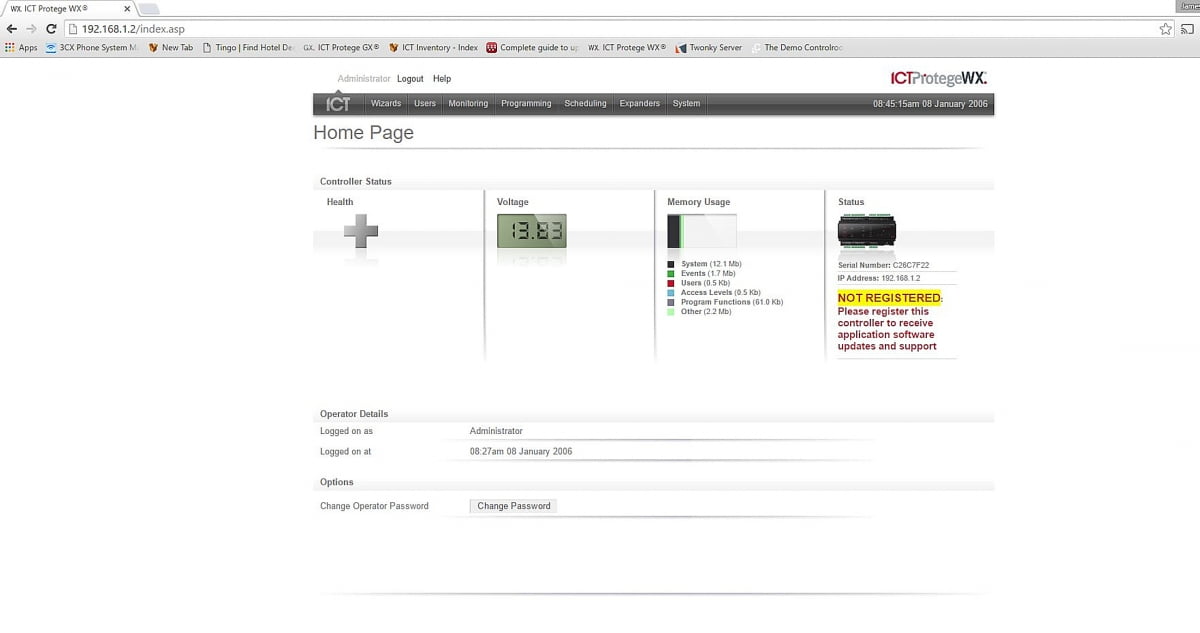
We start by running the expander wizard – these expanders cover all devices, including keypads, door expansion modules, power supplies and input and output boards.
“As you can see, images embedded in the wizard show installers how the system should look during the programming process,” Robinson says. “These LEDs are blinking to show the controller is looking for addressing and now we’ll go out to auto detection and the system will undertake automatic detection of the keypad and power supply. It’s at this point in a bench build an installer can add another couple of expanders to meet the needs of an application.”
Robinson hits save and return, then clicks ‘programme the devices’ upon which the controller reaches out over the network, programmes the devices and undertakes a re-boot. Once the controller powers back up the expanders are all addressed and not a dipswitch in site.
We go down the wizard list to access control then hop into the access control wizard whereupon it reaches out and detects the 2 doors connected to our panel. Robinson names one entry door and the other kitchen door, hits save and then continue. At this point, the system asks if we want an unlock schedule – installers can nominate a schedule or not, then simply hit save and return, and the access control portion of the system is set up. It’s all very simple, indeed. Next up is intrusion detection, which we set up through the security wizard. The wizard creates a system area where it will arm and disarm inputs and Robinson hits save then continue and the controller goes out and detects all the inputs and outputs on the system and lists them.
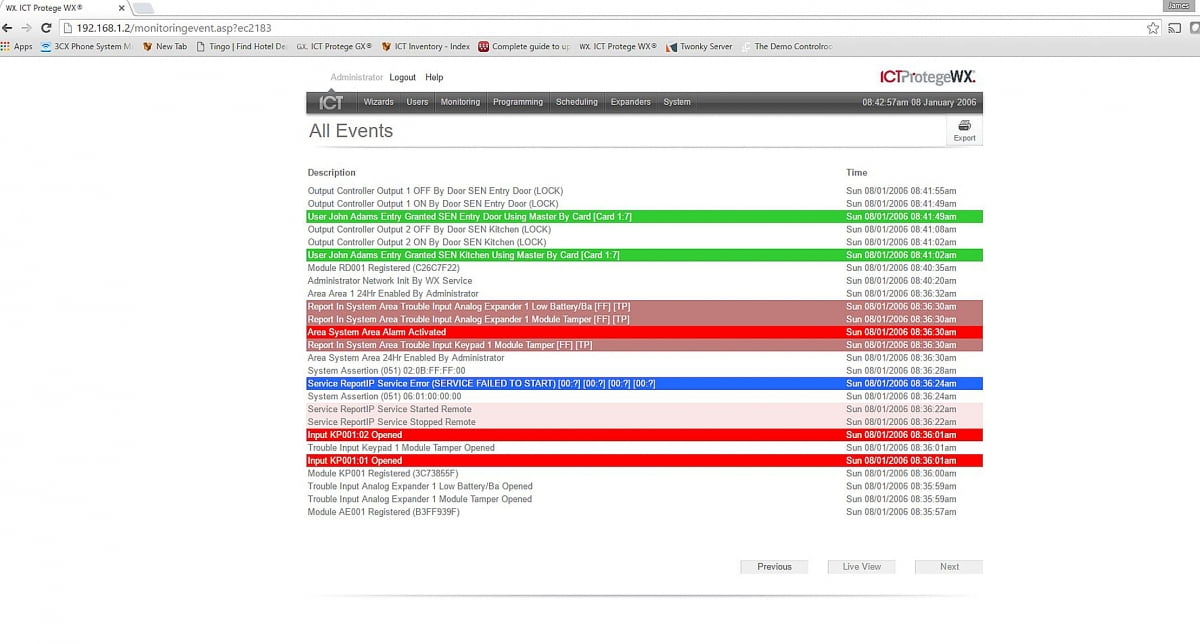
“In the monitoring area we can set up our alarm reporting – ICT supports the traditional dialler which is becoming obsolete, as well as IP reporting with 3G coming,” Robinson explains. “Once I enter this wizard, the controller starts dialler services and re-enables zones and we are off and running.”
We can run a user wizard – this allows importing a file of users or we might simply add an individual user. We also need to find what the readers are communicating in – ICT supports Weigand giving 150m from controller to reader but we prefer RS-485, which is a newer way of wiring readers that offers 900m range and encryption from reader to controller. Robinson hops into the reader expander, sets the readers to RS485 after which the expander undertakes a re-boot and brings the readers up online. I pick up the card assigned to me and badge at a reader and I’m registered coming through a door.”
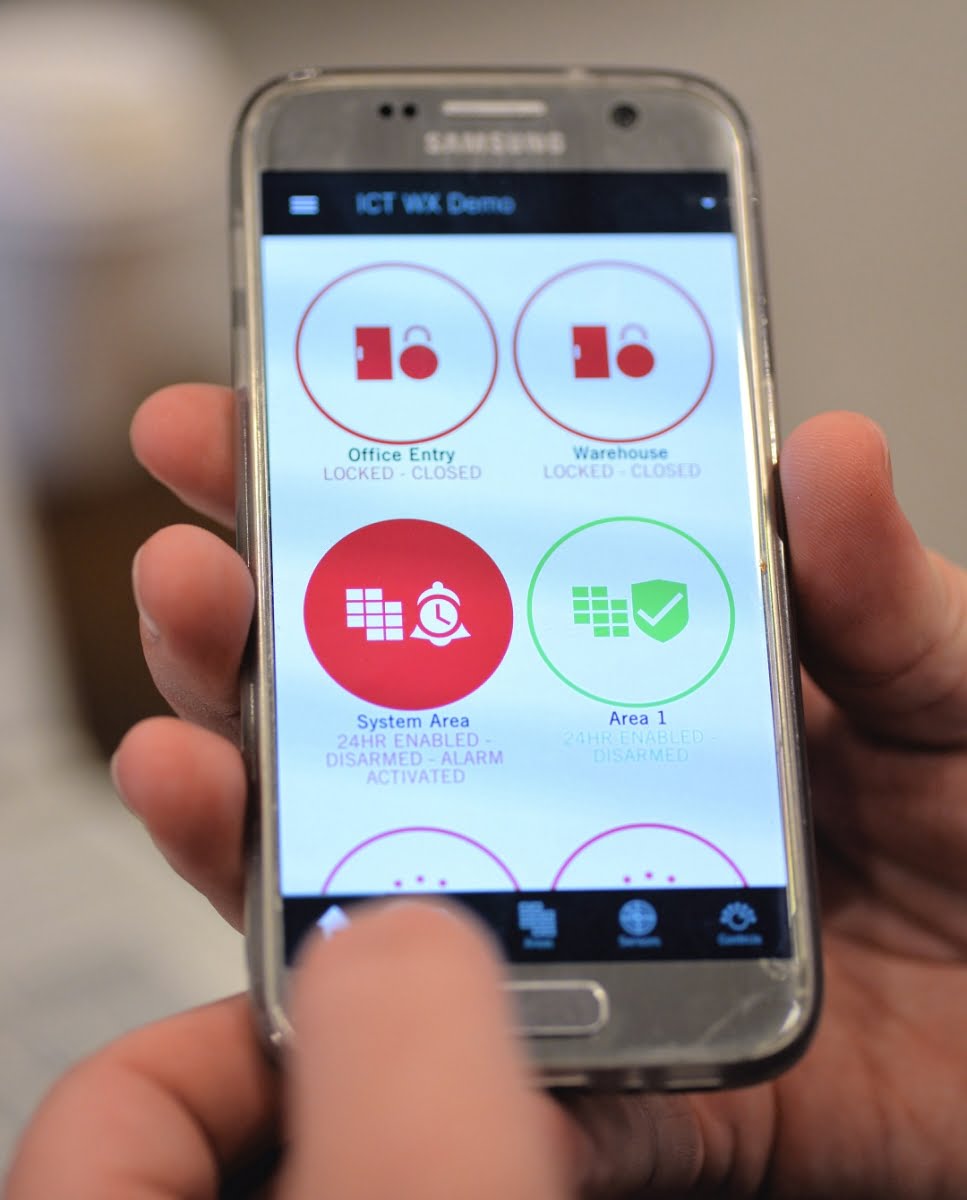
“And that’s it – we’re done – we have just set up a basic access control system,” Robinson explains. “It’s taken us a couple of minutes to get a 2-door access control solution with 8 inputs up and running. Importantly, installers have different skill levels so the system needs to be simple to setup, while allowing additional features for techs willing to undertake some training.” ♦
By John Adams
Key Features of Protege WX System Controller
* Web based architecture for cross-platform access and flexible configuration
* Intuitive wizard-driven interface for quick and easy deployment
* Simple, intuitive user and event reporting
* Compatible with all Protege expander modules and accessories
* Optional WXpert mode to unlock advanced features
*2 reader ports, configurable for either Wiegand or RS-485 reader operation
* 8 high security monitored inputs
* 1 high current monitored bell output
* 2 high current Form C relay outputs
* Comprehensive front panel LED indicators provide device status at a glance
* Firmware upgradable directly from the Protege WX interface
* New ICT mobile app shortly to be released.


